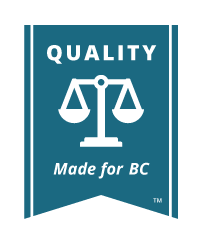Take our self-assessment to see how many of the best practices your information follows. If you substantially follow the best practices, you can qualify to use our Quality Mark™.
There are eight high-impact best practices for public legal information. Each best practice has one question in the self-assessment.
For best practices #1 to #4, there are two possible responses:
- Yes (2 points). Your information has at least half the indicators for that practice.
- No (0 points). Your information has none of the indicators for that practice.
For best practices #5 to #8, there is a third possible response:
- Getting there (1 point). Your information has at least one indicator for that practice.
Completing this (optional) worksheet will help prepare you for the self-assessment.
Each of the best practices have between two and seven indicators. These are qualities that show your information is following the best practice. Take best practice #1, say who made the information. It has three indicators. Your information follows this best practice if it:
- says the name of your organization
- explains enough about your organization to gain people’s confidence — for example, it explains your organization’s purpose or legal expertise
- includes contact information
Your information follows a best practice if it has at least half the indicators for that practice. So here, if your information has two or three of the indicators for best practice #1, it follows that best practice.
 To use the Quality Mark on public legal information, there are three steps involved:
To use the Quality Mark on public legal information, there are three steps involved:
Step 1. Complete the best practices self-assessment on your information, and achieve a minimum score. You must score at least 12 out of 16 points on the self-assessment. As well, the first four best practices are “must haves.” You must score 2 points on each of these best practices to qualify to use the Quality Mark on your information.
Step 2. Commit to applying the public legal information best practices. As a final stage of the self-assessment, you must commit to applying the public legal information best practices to your information to the best of your ability.
Step 3. Apply the Quality Mark to your information. If you qualify, you will be given access to downloadable files of the Quality Mark, in two orientations and various sizes to fit your needs.
The self-assessment takes 10 to 20 minutes to complete. The amount of time depends on:
- Your familiarity with the eight high-impact best practices.
- The extent of the information you are assessing. Assessing one or two representative pages for a large website will take longer than assessing a 2-page fact sheet.
No. If you want to use the Quality Mark for information on a website, you must complete the self-assessment for at least one web page. If you achieve the minimum score required on the self-assessment, you will be able to use the Quality Mark on other web pages on the same website, as long as they are substantially similar to the page you assessed in terms of meeting the best practices.
Substantially similar means that the other pages are comparable to the assessed page in their use of the high-impact best practices. That is, they similarly:
- say who made the information (best practice #1)
- say where the information applies (best practice #2)
- say the information was reviewed for legal accuracy (best practice #3)
- include the date of the last legal review (best practice #4)
- say who or what the information is for (best practice #5)
- make the information understandable for the intended audience (best practice #6)
- have a clean design (best practice #7)
- refer to free or low-cost legal help (best practice #8)
The Quality Mark signals that public legal information is trustworthy and relevant.
Research shows that to cope with information overload, people take shortcuts. They will attempt to lessen their cognitive load by ignoring some information and looking for signals of credibility and relevance.
We’ve studied the signals and shortcuts people use when looking for legal information. We’ve distilled these learnings into the public legal information best practices. Because the Quality Mark can be used only on information that substantially follows the best practices, using the Quality Mark signals that information is trustworthy and understandable for the public. Learn more about why you might want to use the Quality Mark (and the best practices).